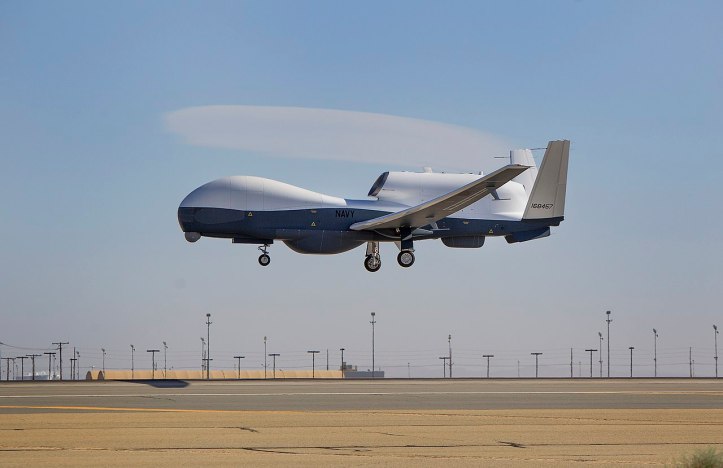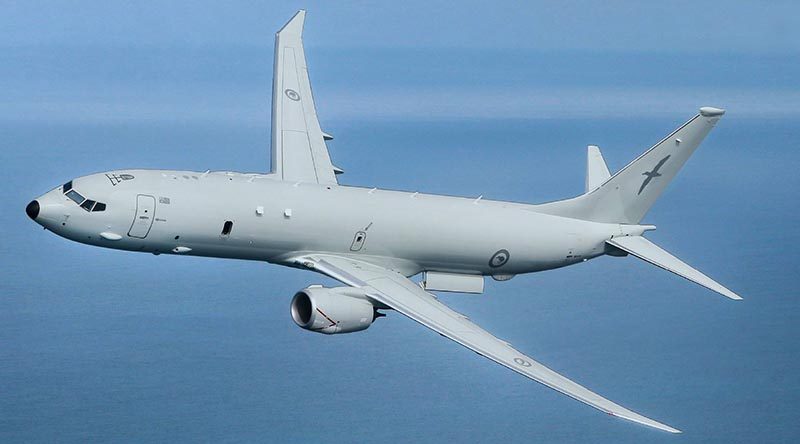After much agonising, the P-3K2 Orion replacement platform was announced on 9 July. Our fleet of 6 Orions will be replaced by 4 Boeing P-8A Poseidon in a staggered delivery between 2023 and 2025/6.
Not everyone is happy with the choice, including many in uniform. However, in time honoured tradition, the New Zealand Defence Force will get behind this new tool and get the best out of it.
I thought it worth summarising what we’ve bought and asking the question “So What?”- what are the implications of this decision? As an aside, it was written in the stars that this would be the aircraft of choice. Not only was Poseidon the Greek god of the sea and other waters, he also had responsibility for earthquakes and horses (for which the Minister for Racing and acting PM, Winston Peters, will be no doubt overjoyed).
As it stands, replacing 6 airframes with 4 is a straight out 33% reduction in task availability. Now the apologists will say that the P-8s are a more capable aircraft and can get places faster etc. That’s true but irrelevant – it’s only going to be more capable if it’s in the air and four aircraft generally can’t be more available than 6, even given the age and maintenance comparisons. Perhaps, it’s hoped that some second-hand P-8s will become available to buy, in the future, as we did with the acquisition of the 6th P-3?
- Poseidon: America's Secret Weapon to Slaughter China's Stealth Submarines
- New sub-killer planes may never fire in anger but Govt wants the option
- New Zealand seeking P-8A Poseidon base builders ahead of first aircraft arrival in 2023
For those of you that like the detail, I’ve pasted in the general and performance characteristics and numbers at the bottom of this article.
In addition to a suite of sensors – which I could list but it would probably be redundant by the time we take delivery – the P-8 has a range of offensive options based on 5 internal and 6 external stations for:
- AGM-84H/K SLAM-ER – A precision-guided, air-launched cruise missile capable of attacking land and sea targets at short-to-medium-ranges (155 nautical miles maximum).
- AGM-84 Harpoon – an all-weather, over-the-horizon, anti-ship missile system and ancestor of the SLAM missile.
- Mark 54 torpedo – a standard 12.75 inch (324 mm) anti-submarine warfare (ASW) torpedo.
- A wide range of other missiles, mines, torpedoes and bombs
- High Altitude Anti-Submarine Warfare Weapon system is still in development but should be in service by the time our aircraft are delivered. The HAAWC integrates an air-launched accessory (ALA) kit with a GPS guidance system and folding wings onto a standard Mk54 torpedo enabling attack profiles from up to 30,000 ft instead of the traditional 100 foot ‘wave-rider’ torpedo runs.
What it lacks is a Magnetic Anomaly Detector (the ‘sting’ pointing back from the tail of the P-3). This was removed from the design because of weight and has been replaced with an acoustic sensor system. It’s claimed that this is a better fit for the operating altitude of the P-8. Time will tell.
It can be refuelled in flight via a flying boom receptacle on the upper-forward fuselage however we’re going to need someone else’s tankers for that job. There’s space in cargo areas for extra fuel tanks if extended range is needed.
I would like to return to the four versus six platforms discussion. At the end of Minister Ron Mark’s media release, he notes “The Government will also consider options for a complementary maritime surveillance capability during the forthcoming Defence Capability Plan review, due to be completed by the end of 2018. The complementary capability will consider smaller manned aircraft, remotely piloted aircraft systems (RPAS) or satellites, for additional maritime surveillance tasks within New Zealand’s Exclusive Economic Zone and near region. This will free up the new P-8A fleet to fly more missions, in the South Pacific and further afield.”
If that happens, the critics of four P-8s will be, to some degree, silenced. The P-8 is designed to operate up to 2 unmanned Aerial Vehicles to extend its range. The design partner is the MG-4C Triton which can operate for 24 hours at a time and ‘see’ for 2000nm.

The Royal Australian Air Force has just committed to purchasing 6 Tritons to complement their P-8 fleet at a cost of $1.4B AUD for the first aircraft. If we follow suit, get the hankies ready for the defence expenditure complainers.
Satellites and short-medium range utility aircraft are a no-brainer for the near-shores patrolling and SAR. Let’s hope they make it into the formula as well. We also need to remember that the P-8 can’t use all the runways around the Pacific that the P-3s use to. This brings us to the move of 5 Squadron from Whenuapai (Auckland) to Ohakea (Manawatu).
- Preparations to house Poseidons start soon at Ōhakea
- Australia receives newest P-8A Poseidon maritime patrol plane
- Tyres on RNZAF Orion burst on landing at Whenuapai Air Force base
A significant chunk of the cost of this purchase is for infrastructure at Ohakea. I have a range of OIA requests around that topic to get a better handle on just how much. The main reason given for the move is that the P-8 can’t operate out of Whenuapai fully laden due to the runway length. There’s a second line of discussion going on about housing encroachment and noise. The NZDF seems resigned to the fact that they will have to give up Whenuapai eventually. This is fine as long as another base is built elsewhere but to have only one operational base – Ohakea – would be mad from a resilience point of view. Perhaps putting some operational activity back to base Woodbourne which is currently used only for ground training and engineering? Alternatively, perhaps the Minister for Regional Development can find a region in need of a first-rate, brand new air force base?
General characteristics
- Crew: Flight: two; Mission: seven
- Length: 129 ft 5 in (39.47 m)
- Wingspan: 123 ft 6 in (37.64 m)
- Height: 42 ft 1 in (12.83 m)
- Empty weight: 138,300 lb (62,730 kg)
- Useful load: 19,800+ lb (9,000+ kg)
- Max. take-off weight: 189,200 lb (85,820 kg)
- Powerplant: 2 × CFM56-7B turbofan, 27,000 lbf (120 kN) each
Performance
- Maximum speed: 490 kn (907 km/h, 564 mph)
- Cruise speed: 440 kn (815 km/h, 509 mph)
- Combat radius: 1,200 nm (2,222 km); 4 hours on station (for anti-submarine warfare mission)
- Ferry range: 4,500 nm (8,300 km)
- Service ceiling: 41,000 ft (12,496 m)





